Personnel Index - Detail
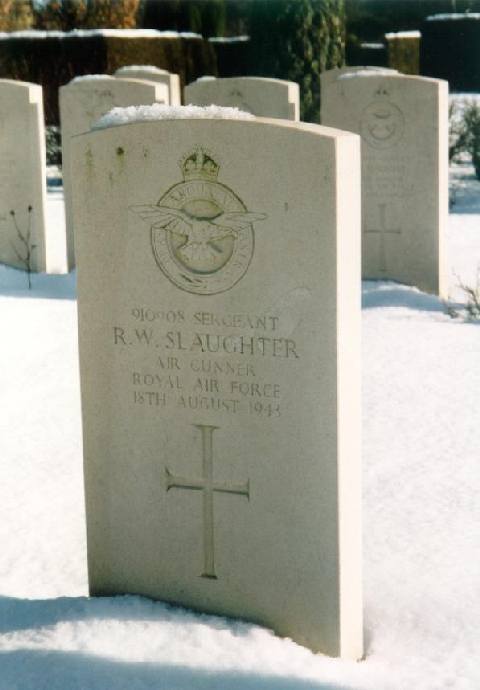
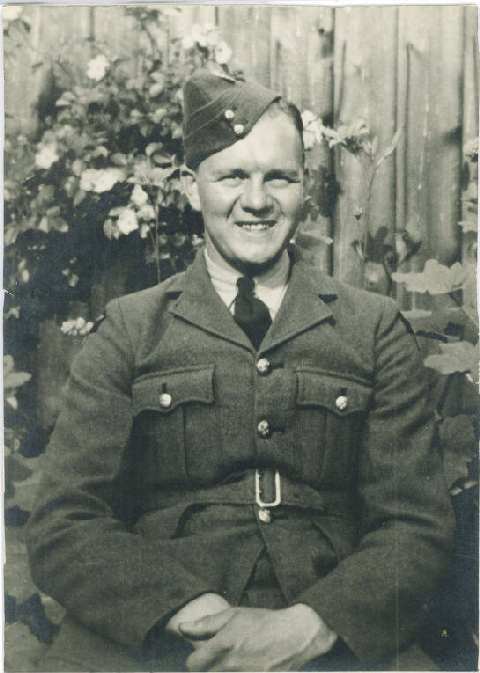
Bob Slaughter taken in early 1940, aged 22
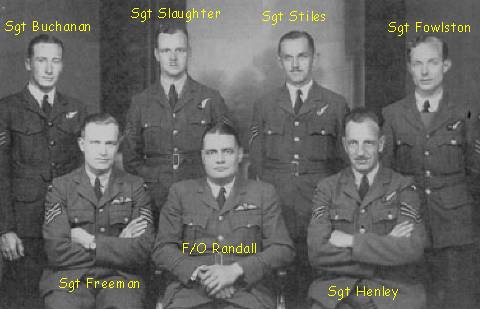
The crew photograph
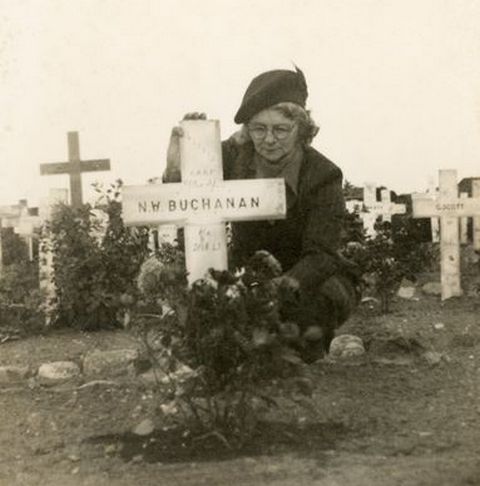
Bob Slaughter's mother at the grave of crewmember Norman Buchanan.
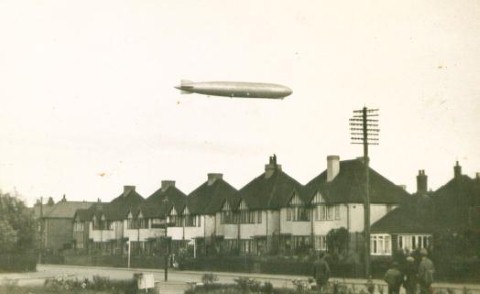
This picture postcard shows an airship flying over Bob Slaughter's street. It was here at Woodbridge Hill, Guildford, in the house next to the bungalow, that Bob's parents received the dreaded telegram.
(The bungalow and the semi detached house, Bob's, next to it have now been demolished to make way for a link road down to the A3)
17/18 August, 1943; PEENEMUNDE:
This was a 'special' raid in which Bomber Command was tasked to attempt a night time precision raid on the German research establishment at Peenemunde, on the Baltic coast. It was here that the V-2 rockets were built and tested.
It was essential that a decisive blow be struck against this target, and crews were made well aware at briefing that they would have to return the following evening if sufficient damage was not incurred. Such was the importance of this raid, that most of the squadrons operating, were led by their Wing Commanders. A force of 596 bombers started leaving their home airfields on a pleasantly warm summer’s evening. Twelve Lancasters had been detailed from the squadron and at 21.35 the first aircraft and crew speed down Fiskerton's runway. Five miles beyond the runway’s end lay the city of Lincoln with its majestic Cathedral silhouetted against the setting sun. Most of 49 Squadron's aircraft bombed from about 7,000ft. By this time, the German controllers had realised the real target and had re-directed the night fighters. In conjunction with strong flak defences, the fighters took a heavy toll of bombers, especially the 3rd and final wave. For the first time the German fighters were using a new weapon, codenamed 'Schrage-Music'. It consisted of two 30mm cannon mounted to point upwards from the fuselage. So equipped the pilot slipped underneath an unsuspecting bomber and aimed shells up into the wing fuel tanks. Once perfected, an experienced crew could bring a bomber down using very few rounds. Forty aircraft fell, with 5 Group losing 17 - Fiskerton had 4 Lancasters shot down, one-third of those dispatched by 49 Squadron.
Lt Meissner picked up F/O Harry Randall's aircraft and in seconds shot them down... this aircraft crashed in Denmark with no survivors; they too are buried at Aabenraa. The crew’s flight engineer was Sgt Les Henley. Formerly in the Army, he had joined the RAF in 1940 and managed to get on ops at the age of 43, which was well above the average.
Lancaster JA691 (EA-L)
F/O H.J. Randall Pilot (Killed)
Sgt L.J. Henley F/E (Killed)
Sgt L.F. Freeman Nav (Killed)
Sgt R. Fowlston W/AG (Killed)
Sgt N.W. Buchanan RAAF A/G (Killed)
Sgt W.J. Stiles B/A (Killed)
Sgt R.W. Slaughter A/G (Killed)
Crew on their 8th operation
For more details of the loss see this website dedicate to the loss of JA691.
Sgt Slaughter's name is remembered on the Guildford City War Memorial
Information about a recent discovery - January 2024
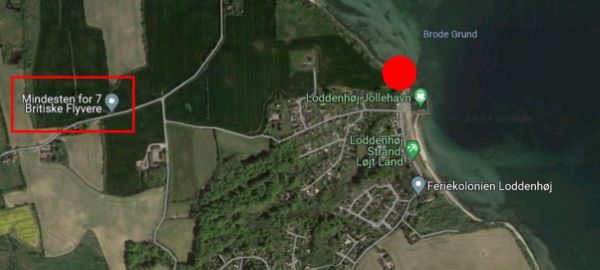
The location where the turret door was found in relation to the crash site.
This was following a series of violent storms that moved large volumes of sand.
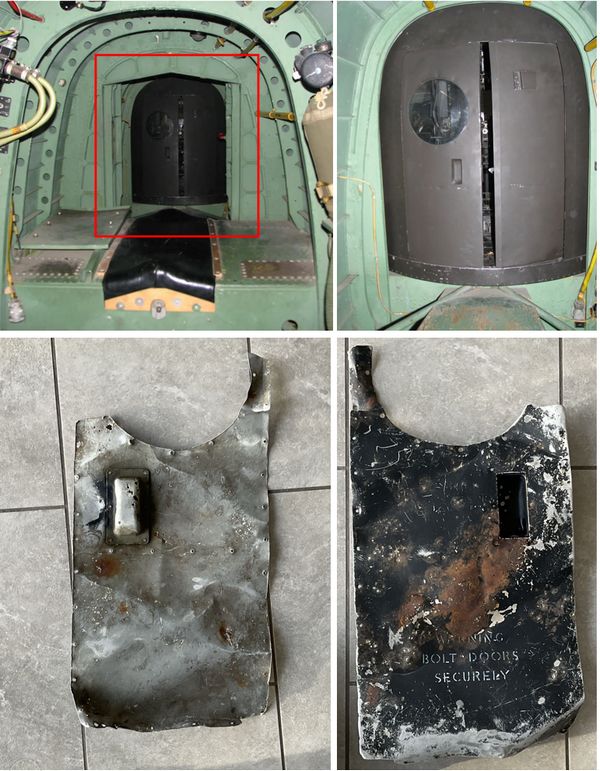
The rear turret door photographed inside the Canadian Lancaster and front and rear images of the recovered part.
Our thanks to René Winkelmann for discovering the door and for the photographs.
